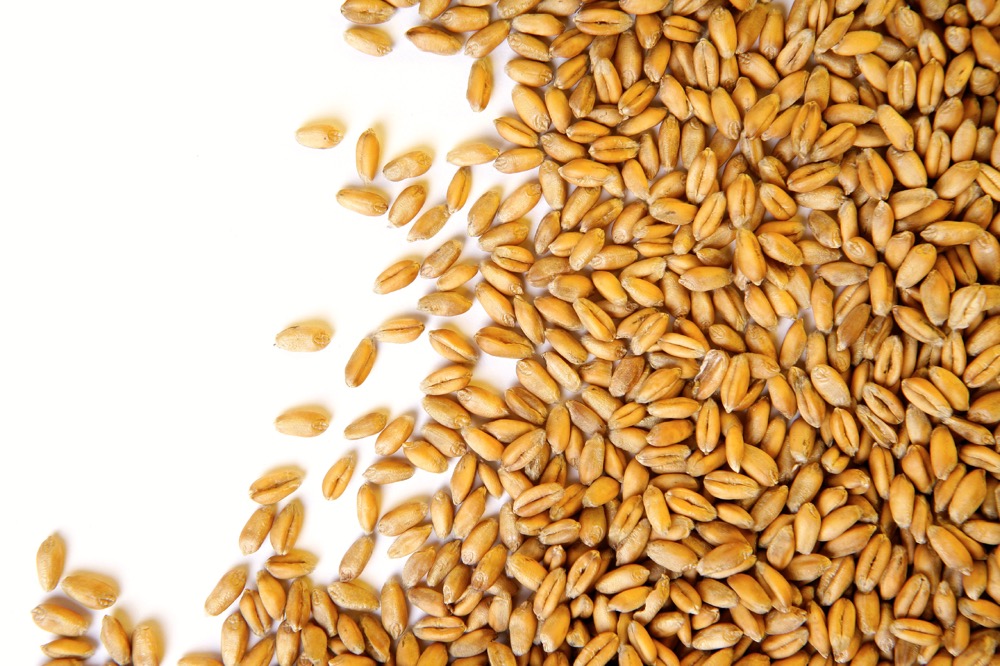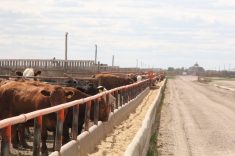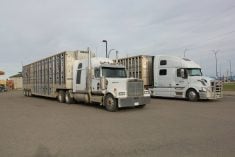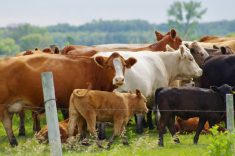Over the past 20 years, Canada’s barley acreage has shrunk by nearly 155,000 acres annually, while both wheat (up 440,000 acres annually) and corn (up 300,000 acres annually) have grown. A smaller barley supply has prompted Western Canadian cattle feeders to look at alternate grain sources. Cattle feeders in Central Canada and the U.S. have fed corn for many years, so a lot of scientific and practical information already existed to ease its adoption.
But there was less knowledge and experience when it came to feeding wheat. Nutritionists and cattle feeders know that wheat’s higher starch content increases the risk of digestive upsets such as acidosis. They also know that red wheat (bread) varieties had more protein and a harder seed than white (pastry) varieties. These differences in protein content and hardness will influence how they respond to processing, as well as their nutritional value for different types of cattle.
Dr. Tim McAllister led a team of researchers from AAFC Lethbridge and the University of Saskatchewan to refine grain procurement, processing and management recommendations for including wheat in feedlot diets (Effect of dry or temper rolling of high- or low-protein wheat and its impact on rumen parameters, growth performance, and liver abscesses in feedlot cattle; https://doi.org/10.1139/cjas-2022-0110).
Read Also
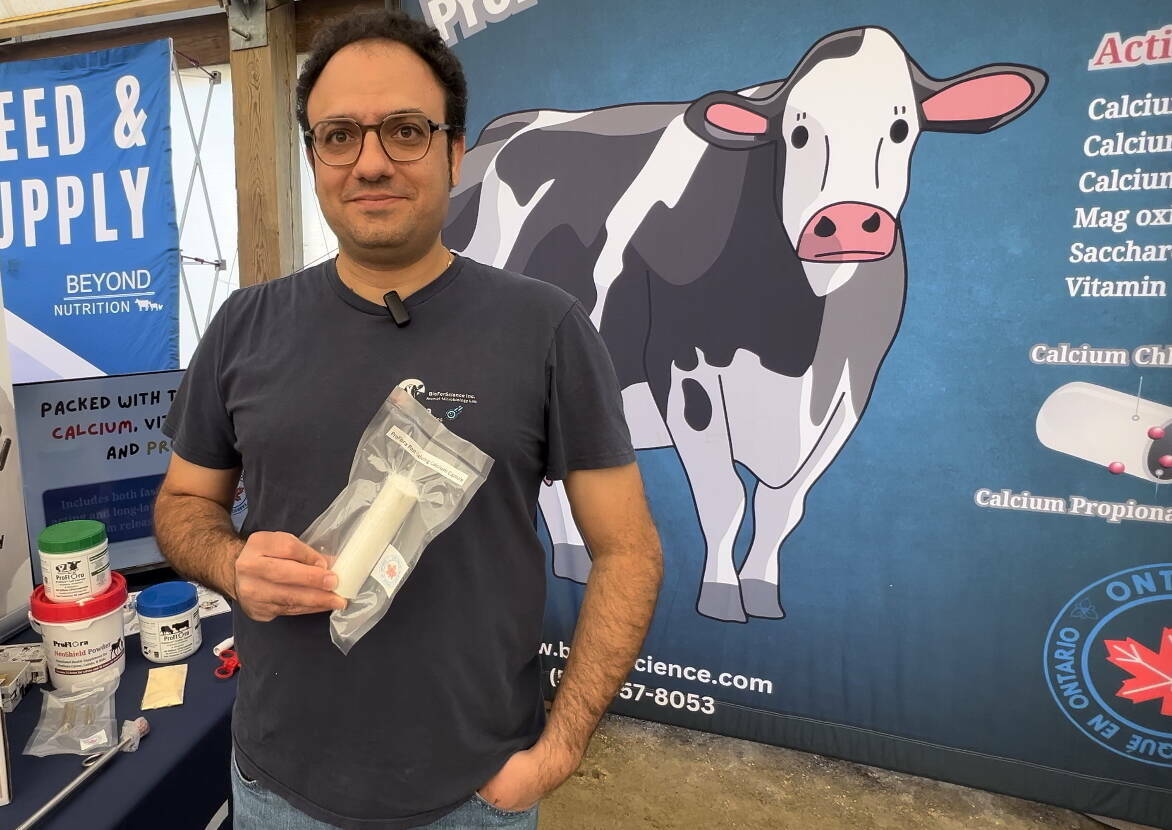
Canadian Cattle Young Leaders, national Environmental Stewardship Award winner and more
Canadian beef industry news, including award winners and job changes.
What they did: This team compared high protein (Canada Western Red Spring and Red Winter) versus low protein (Canada Western Soft and Hard White Spring) wheat. Each was rolled to a 75 per cent processing index, either dry or after tempering in water (18 hours to 18 per cent moisture content). These four diets (high-protein dry or tempered, and low-protein dry or tempered) were fed to 160 Angus steers (40 head per treatment). Steers were backgrounded for 84 days (35 per cent wheat grain, 60 per cent barley silage, five per cent supplement), stepped up over 28 days, then finished for 140 days (85 per cent wheat grain, 10 per cent barley silage, five per cent supplement). Rumen pH was monitored in a subset of cattle, and carcass data was collected.
What they learned: Unprocessed high-protein (hard red) wheat had higher test weight (more pounds per bushel) than low-protein (white) wheat. Both methods of rolling produced more fine particles and fewer larger particles from hard (high-protein) wheat than from softer (lower-protein) wheat. Temper rolling produced more uniform particles than dry rolling. Dry-rolling high-protein wheat produced the most fines, which increases the risks of erratic feed intake and rumen acidosis.
The different diets did not statistically affect growth performance in the backgrounding phase. However, steers fed the high-protein wheat diet gained four per cent more efficiently than the low-protein wheat diet, likely because the added protein helped them grow more muscle. Steers fed dry-rolled wheat gained four per cent more efficiently than those fed temper-rolled wheat, likely because the smaller particle sizes improved starch digestibility. Differences in rumen pH were minor, although steers fed the high-protein diet spent more time at low (more acidic) pH than the low-protein steers. This was likely related more to the higher proportion of fines from the hard wheat than its protein content, although the two go hand-in-hand — it’s the protein that makes wheat kernels hard and more prone to shattering.
Both diet and processing affected rumen pH during the step-up period, even though the 28-day step-up was very gradual. Steers on both the dry-rolled high-protein and the temper-rolled low-protein diets had lower (more acidic) rumen pH than the other two groups, but for very different reasons. As noted above, dry-rolling high-protein wheat produced more fines that fueled faster digestion and more acid production. In contrast, temper-rolling low-protein wheat may have helped separate the starch from the protein and allowed it to be digested faster.
During finishing, steers fed the low-protein diet gained seven per cent faster than those fed the high-protein diet, likely because they tended to eat more. By this point, there was no particular benefit to consuming more dietary protein, because the steers had shifted towards marbling and backfat deposition. There were no differences in feed efficiency, and diet-related differences in rumen pH were minimal.
There were no differences in carcass weight or quality grade, but the high-protein diet tended to produce more Canada 1 and 2 (leaner) yield grades than the low-protein diet. There was also a much higher proportion of severely abscessed livers in steers fed the high-protein diet (50 per cent) than the low-protein diet (20 per cent).
What does this mean to you? Understanding how to make the best use of the available feed grain options helps keep Canadian feedlots competitive as economic and feed supply conditions change.
Bottom line: If it is cost-competitive, wheat can be a good option in feedlot diets. Red varieties can be particularly useful in backgrounding diets, where the higher protein can benefit muscle growth. White varieties may be a better fit for finishing diets. Tempering improves kernel processing, leading to more uniform feed intake and better digestive health. However, even a very conservative step-up to a wheat-based finishing diet poses challenges to rumen and liver health.
The Beef Cattle Research Council is funded by the Canadian Beef Cattle Check-Off. The BCRC partners with Agriculture and Agri-Food Canada, provincial beef industry groups and governments to advance research and technology transfer supporting the Canadian beef industry’s vision to be recognized as a preferred supplier of healthy, high-quality beef, cattle and genetics.


